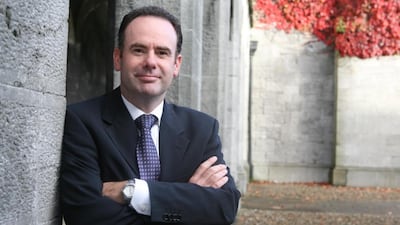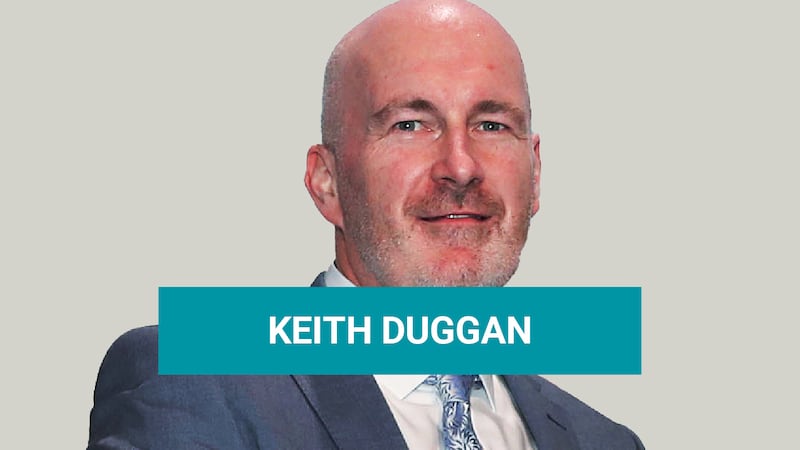During Covid, one of our three young-adult children developed an eating disorder that required inpatient hospital treatment. It was her Leaving Cert year and just a few weeks after her 18th birthday. Before the pandemic, she appeared to be thriving. In the periods of social distancing that followed, however, the mental health cracks became more noticeable and before long, things really started to crumble. As parents of someone needing inpatient support, we experienced the floor-pacing anxiety that comes from having a son or daughter who is seriously ill. It was the feeling of guilt that was most disabling, though.
The burden of stigma around mental health disorders remains enormous. Stigma is often a consequence of lack of knowledge, prejudicial attitudes, and/or discriminatory behaviour, with negative consequences for relationships, education and employment and access to care. Stigma doesn’t just come from others. Many people who live with mental health disorders experience self-stigma: holding beliefs about your mental health that limit your expectations for yourself and which can act as a significant barrier to help-seeking.
This is also true for parents, who are often the main help-seekers for their young adults. As a parent, the stigmatising beliefs we held about being responsible for our daughters’ difficulties were an enormous barrier to seeking help. It wasn’t that anyone ever told us we were bad parents. In fact, I don’t remember anyone ever criticising us. It didn’t matter that I was a mental health professional. We felt we had failed as parents and that others would see us as such. Starting from this position became a critical stumbling block in seeking help and support.
Starting to seek help
When we hear about treatment for mental health in the media, it’s almost invariably about the lack of availability of services, which is absolutely justified. The lack of services is appalling. For eating disorders, for example, many mental health services don’t have a dietician working on staff and often only limited access to a qualified clinical psychologist. In fact, the only thing you are guaranteed is to have access to is a medical doctor and even when that doctor is a psychiatrist, it’s unlikely that they will specialise in eating disorders. Despite a published model of care for the Irish health system that has been in existence since 2018, the development of eating disorder services has been slow.
READ MORE
There is another equally fundamental difficulty with service provision. When our daughter initially told us about her difficulties, she was four weeks off her 18th birthday. This made things complicated because the Child and Adolescent Mental Health Services (Camhs) only go up to age 18, with the adult services taking over once you hit your 18th birthday. This arbitrary split between child/adolescent and adult services is probably the single biggest difficulty facing mental health services in the present day. Seventy-five per cent of all mental health problems first develop between the ages of 15-25 years and yet, this is where we place the cliff. And it is a cliff – there is notorious discontinuity between the two services. The mental health professionals involved in each service work separately and often, there is no hand over of cases. In fact, because resources are so scarce in adult services, disagreements about whether someone even should be transferred from Camhs to adult services are frequent.
Beyond the issues of lack of and discontinuity in services, another difficulty for parents seeking help for young adults is the culture in the adult services of non-involvement of parents. The Camhs services work on the premise that “parenting follows the child” and that problems in parenting occur as a response to a child’s difficulties. Camhs services consequently have a history of involving parents, and indeed whole families, in therapy so they can learn better ways to support their child. A really nice example of this is the work of Cathy Creswell and colleagues in Oxford University where parents are trained to be “co-therapists” for the purposes of delivering quality interventions to their sons and daughters.
In contrast, in the adult services, two critical factors often lead to the non-inclusion of parents. The first is that when mental health professionals consider family background, it is usually in the context of trying to identify vulnerability factors and predisposing causes of mental health difficulties. Exposure to early life adversity, poor parental bonding or parental attunement and a family history of mental health difficulties are all relevant here. By having our “antennae” up for such difficulties, however, our “default” position as therapists is often to expect that parents are going to be part of the problem rather than part of the solution. In so doing, the risk is that we treat parents and family as such – part of the problem rather than allies.
The second factor relates to confidentiality – the ethical imperative to ensure that trust is never diminished by sharing information without permission. For young adults, however, this can result in something of a catch-22. As with other mental health difficulties, struggling with an eating disorder can often mean a young person living with guilt and shame about their difficulties. They learn to cope by attempting to hide their struggles. Their disordered eating in turn is often associated with other unhelpful coping behaviours that reinforce the guilt, shame and secrecy designed to cover it all up. Consequently, a key part of treatment is finding ways to open up communication about these patterns so that the person can start to discover better ways of coping. Finding a way to respect privacy while opening up communication is a tough balancing act. Failing to organise services for young people in a way that addresses these issues can be utterly disastrous.
When it became necessary, we sought an inpatient referral to a private mental health facility. The local public facility, although housed in a beautiful new purpose-built building, had next to zero supports in terms of dieticians or psychologists. By contrast, we understood that the private facility had an adolescent unit that would be appropriate. I thought I knew the services pretty well. I’d trained for many years in the HSE child and adult services. I had also trained in the two largest private inpatient mental health facilities – St John of God Hospital and St Patrick’s hospital, later working in one and teaching in the other. While I may have known these services from the perspective of a mental health profession, I later realised that from the perspective of the parent with a child who had just turned 18, I knew very little.
Accessing inpatient care
The first thing about the admission process is that no matter how much our just-turned 18-year-old was struggling, there was no possibility of our being involved, even though it was us who’d sought the admission on her behalf. The hospital admission staff would only talk to our daughter so any information we had was from her. This was so unhelpful. Why would you ask someone who was still in school, who had just turned 18 and in need of hospital care, to fill out admission forms over the phone and not include their parent or caregiver? Why would you not inform the parents of when the admission was likely to happen, particularly when it was delayed?
This was the start of us feeling excluded, of feeling we had no voice in our daughter’s assessment or care. When the admission date finally came, we were met at the door and our daughter was literally taken away. While I’m sure this was due to Covid restrictions, I felt certain someone would want to talk us and get our sense of what was happening. A collateral history – where family members provide details about the person receiving treatment – is a standard part of most inpatient intake assessments. It can be enormously valuable when trying to develop a fuller picture, especially in the developmental context of treating an 18-year-old. This didn’t happen and we felt it was enormously detrimental our daughter’s care.
[ Camhs left more than 100 children without care for up to two years, report findsOpens in new window ]
I don’t believe we were intentionally excluded or gaslighted. I actually don’t believe that anyone was thinking of us at all. This was made clear to us by the stark contrast it represented to the response of our daughter’s school. The principal and staff could not have been more understanding, helpful or supportive to us as parents. Fundamentally, I think the problem with the mental health service our daughter received was that it wasn’t geared to her developmental stage – the stage of “emerging adulthood” where you begin to take on adult roles but clearly aren’t quite there yet. While there was a young adult program, there was no ward for young adults aged 18-25 years.

Our daughter was treated in a general adult ward and, at that time, not the one that focused on eating disorders. Contact from the team was extremely limited in those first few weeks. We doubted ourselves and were at pains to not come across as “those” parents – “entitled” interfering parents who think they are helping by advocating for their child but end up undermining the process. In retrospect, I wish we had done more. Our daughter’s view is that the team went in the wrong direction in those early weeks, largely ignoring her eating disorder. Whether or not we could have helped, it would certainly have helped us to feel included in our daughter’s care. As it was, the sense of being excluded buried us further in our sense of guilt.
More than two years have since elapsed. It has been far from plain sailing but our daughter has made good progress and we feel like we’re on the road to recovery. The inpatient and outpatient eating disorder treatment that our daughter eventually received was a turning point. The Pilar programme run online by Bodywhys for family members was a wonderfully empowering resource. A psychologist who specialises in eating disorders has been a tremendous support, first to us and later to our daughter. We’re hopeful about the future.
Most young adults seeking help won’t require inpatient care and for those needing help at the mild/moderate level, several developmentally appropriate services are available, including the national Jigsaw service. As YOULEAD (which delivers a doctoral training programme in youth mental health research) graduate Dr Daráine Murphy observed in her doctoral thesis on parental help-seeking, our experiences as parents of feeling excluded and not listened to are far from unique.
It’s clear to me now that our services require not only more funding but a serious rethink about how they should be structured and geared towards the needs of young people and their families.
- Prof Gary Donohoe is University of Galway Established Professor of Psychology, Co-director of the Health Research Board (HRB) YOULEAD program and HRB Leader in Youth mental health. On Monday, March 13th, some of the key findings from YOULEAD’s research in Ireland will be presented at a one-day meeting at UCD. The event will include international speakers Prof Patrick McGorry, founder of Orygen Services in Melbourne, Australia, describing global trends and Dr Jo Ellins, University of Birmingham, describing scalable models of best practice. (Details at universityofgalway.ie/youlead/youlead-meetup-23/)












